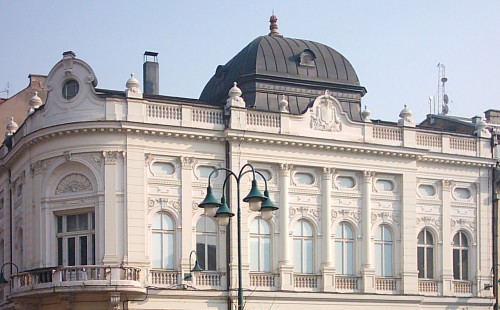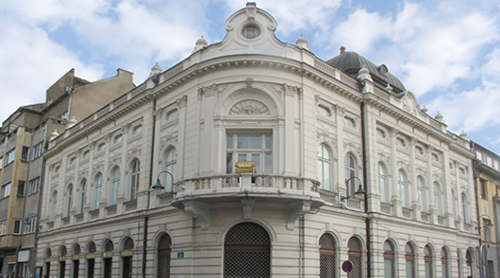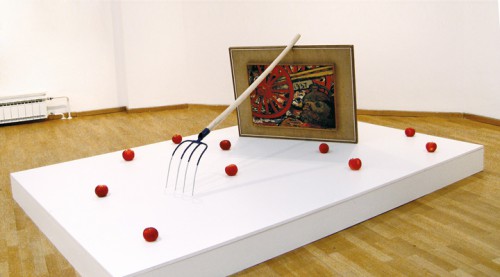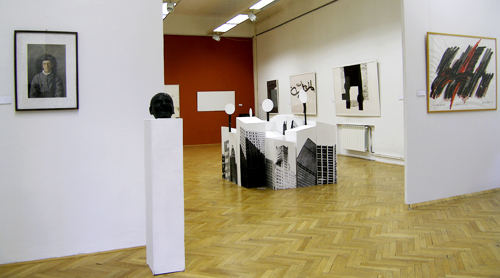From the start, the National Gallery of Bosnia and Herzegovina has been divided into several departments that enable it to carry out its legally pre-determined activities such as: systematic research, maintenance, restoration and presentation of its collections to public.
The research-related activities revolve around its rich collection, and can be performed within the library and documentation and archive department. Additionally, with its photo-documentation division, the National Gallery of BiH can deliver professional research in the field of fine arts, primarily focused on the works of the Bosnian and Herzegovinian origin. The Gallery’s staff is always on top of the new and emerging trends in art scene, providing the public with an access to new information and news. Lastly, the Gallery handles all the publishing of its professional work, monographs, catalogues, etc. Frequently and regularly, the National Gallery of BiH organises permanent and temporary exhibitions in cooperation with the related institutions in the country and abroad, also organizing the exhibition exchange. Lastly, its educational segment offers various educational programmes around the exhibitions, organized professional guided tours and children’s workshops.
The National Gallery of Bosnia and Herzegovina was established by the Government of the People’s Republic of Bosnia and Herzegovina on 11th of October, 1946.
The core of its initial collection consisted of about 600 exhibits that were transferred over from the former Gallery of the National Museum of BiH. The Gallery’s doors were first opened to the public in 1959 with its first permanent exhibition.
Today, the collection consists of over 6,000 invaluable pieces divided into several sub-collections (the Collection of Bosnian-Herzegovinian art, the Collection of Ferdinand Hodler’s works, the Collection of Icons and Sacral art, the Collection of Yugoslav art, the Collection of international works donated to the Gallery, the Collection of photographs and the archive of the “NADA” fine arts magazine).
In addition to the collection, there is a Documentation and Library Department that enables thorough research to be carried out on variety of art topics, within the Gallery’s premises. Restoration, carpentry and gilders’ workshops, a photo-studio with photo-library and Pedagogical Department are also set up to serve the general public.
Since the Gallery’s establishment, more than 900 major and minor exhibitions were exhibited there, whether they were locally currated or just transferred from other institutions; as well as over 150 publications were published.
In 1986, the Gallery received the Decoration of Merit with Silver Rays from the presidency of Yugoslavia.
During the 1992-1995 war, despite the circumstances, the Gallery kept its doors open and has organised around 42 exhibitions. The most difficult time for this institution was the period after the Dayton Peace Agreement, under which the new organisation overseeing the cultural life does not recognize the existence of the national institutions, thus robbing the National Gallery of Bosnia and Herzegovina of its founder and financier.
The building of the Gallery, built around 1912, used to be a department store owned by Ješua and Mojca Salom. It is believed to be designed by architect Josip Vancaš.
Architecturally, it reassembles late works of Historicism, while its structure has Renaissance and Classicistic forms along with a few elements of Secession. The building was re-purposed after the WWII, and since 1953, it has been the home of the National Gallery of BiH.
During the 1990’s aggression against B&H and the siege of Sarajevo, the building was heavily shelled and damaged.
However, thanks to the Government of the Swiss Confederation and Gallery’s own efforts to find donors, the National Gallery of Bosnia and Herzegovina has succeeded to almost completely reconstruct its building once the war has ended.




